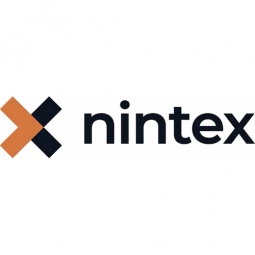Technology Category
- Analytics & Modeling - Robotic Process Automation (RPA)
- Cybersecurity & Privacy - Security Compliance
Applicable Industries
- Electronics
- Equipment & Machinery
Applicable Functions
- Maintenance
- Quality Assurance
Use Cases
- Leasing Finance Automation
- Robotic Disassembly
Services
- Testing & Certification
About The Customer
IMS Electronics Recycling is a US-based company that plays a crucial role in helping manufacturers and other businesses reduce their carbon footprints through responsible recycling of e-waste. The company is tasked with complying with a host of federal, state, and local regulations, as well as voluntary certifications such as ISO 9001, ISO 14001, OHSAS 18001, and the R2 (Responsible Recycling) standard. The Director of Compliance, Robert Benavent, leads the department responsible for ensuring the company's compliance with these regulations. The company was seeking a way to boost compliance while reducing the time and effort required of employees to achieve it.
The Challenge
IMS Electronics Recycling, a US-based company that plays a crucial role in helping manufacturers reduce their carbon footprints through responsible recycling of e-waste, was facing a significant challenge. The company was grappling with the need to comply with an ever-growing range of state, local, and federal regulations, as well as voluntary certifications such as ISO 9001, ISO 14001, OHSAS 18001, and the R2 (Responsible Recycling) standard. This compliance required substantial time and effort from employees throughout the company. The Director of Compliance, Robert Benavent, was tasked with ensuring that IMS Electronics Recycling complied with these regulations, but he also wanted to reduce the administrative burden on his staff and increase their productivity. The challenge was to find a way to meet increasing compliance requirements while decreasing the involvement of employees.
The Solution
To address this challenge, Benavent turned to workflow automation. He partnered with Nintex Solution Provider, Konica Minolta, to design and build an intuitive and impactful workflow automation solution using Nintex Workflow and Nintex Forms for Office 365. The choice of Nintex was due to its seamless integration with the Office 365 platform that the company was already using. As a first project, Konica Minolta worked with IMS Electronics to automate the daily inspection process for equipment. Instead of workers completing paper forms to capture equipment status, they now used tablets to capture this information directly with a Nintex form. The content was stored in SharePoint Online and triggered a Nintex workflow to deliver necessary notifications to the appropriate managers. This new process not only streamlined the inspection process but also ensured faster and more accurate completion of forms, eliminating the need for time-consuming follow-up inspections.
Operational Impact
Quantitative Benefit

Case Study missing?
Start adding your own!
Register with your work email and create a new case study profile for your business.
Related Case Studies.

Case Study
Smart Water Filtration Systems
Before working with Ayla Networks, Ozner was already using cloud connectivity to identify and solve water-filtration system malfunctions as well as to monitor filter cartridges for replacements.But, in June 2015, Ozner executives talked with Ayla about how the company might further improve its water systems with IoT technology. They liked what they heard from Ayla, but the executives needed to be sure that Ayla’s Agile IoT Platform provided the security and reliability Ozner required.

Case Study
IoT enabled Fleet Management with MindSphere
In view of growing competition, Gämmerler had a strong need to remain competitive via process optimization, reliability and gentle handling of printed products, even at highest press speeds. In addition, a digitalization initiative also included developing a key differentiation via data-driven services offers.

Case Study
Predictive Maintenance for Industrial Chillers
For global leaders in the industrial chiller manufacturing, reliability of the entire production process is of the utmost importance. Chillers are refrigeration systems that produce ice water to provide cooling for a process or industrial application. One of those leaders sought a way to respond to asset performance issues, even before they occur. The intelligence to guarantee maximum reliability of cooling devices is embedded (pre-alarming). A pre-alarming phase means that the cooling device still works, but symptoms may appear, telling manufacturers that a failure is likely to occur in the near future. Chillers who are not internet connected at that moment, provide little insight in this pre-alarming phase.

Case Study
Remote Temperature Monitoring of Perishable Goods Saves Money
RMONI was facing temperature monitoring challenges in a cold chain business. A cold chain must be established and maintained to ensure goods have been properly refrigerated during every step of the process, making temperature monitoring a critical business function. Manual registration practice can be very costly, labor intensive and prone to mistakes.

Case Study
Premium Appliance Producer Innovates with Internet of Everything
Sub-Zero faced the largest product launch in the company’s history:It wanted to launch 60 new products as scheduled while simultaneously opening a new “greenfield” production facility, yet still adhering to stringent quality requirements and manage issues from new supply-chain partners. A the same time, it wanted to increase staff productivity time and collaboration while reducing travel and costs.








